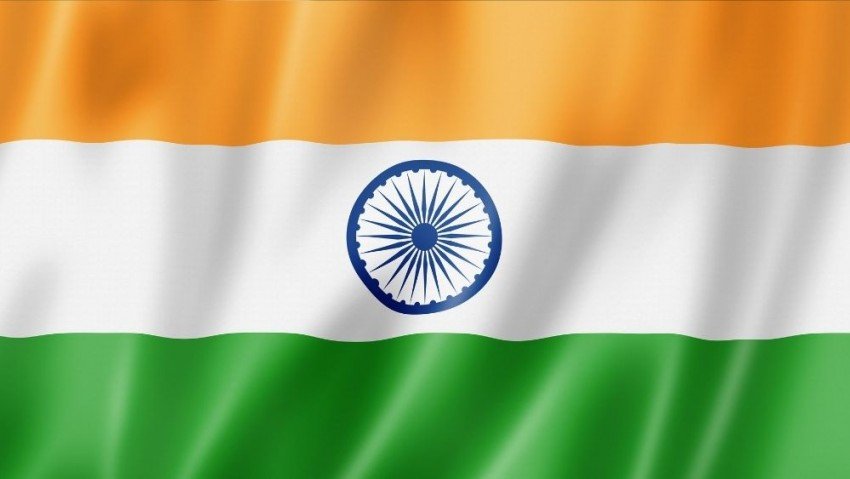Each and every flag represents its respective country and culture. All flags carry a distinct message as does the Indian Flag. The Indian flag is a daily reminder of the set of values that the state and its citizens are guided by and of our extensive history. It inspires the people of our country to be proud of the countless Indians who have laid their lives for the Tiranga.
As was rightfully said by Mahatma Gandhi, “A flag is a necessity for all nations. Millions have died for it. It is no doubt a kind of idolatry that would be a sin to destroy. For, a flag represents an Ideal. The unfurling of the Union Jack evokes in the English breast sentiments whose strength it is difficult to measure. The Stars and Stripes mean the world to the Americans. The Star and the Crescent will call forth the best bravery in Islam.”
“It will be necessary for us Indians: Muslims, Christians, Jews, Parsis, and all others to whom India is their home to recognize a common flag to live and to die for.”
A Flag not only acts as a symbol of freedom and independence of a country but also as a symbol of unity. Hoisting the flag at different venues and various events brings out a sense of patriotism among the people of the country and brings them closer together. This is why we see people bringing out and waving around the tricolor not only on Independence Day or The Republic Day but also during important sporting events and matches. We, as Indians, identify with the flag and associate ourselves with it.
The Indian Flag was officially adopted on 22nd July 1947 by the Constituent Assembly in its present form after it underwent various changes over the course of our freedom struggle against the British. It served as the National Flag of the Dominion of India from 15th August 1947 to 26th January 1950 and that of the Republic of India thereafter. It was originally known as the ‘Swaraj Flag’ when it was adopted by the Congress Party in 1931.
Design of the Indian Flag
The Indian Flag is a horizontally divided tricolor consisting of Saffron at the top, white in the middle, and dark green at the bottom. In the center of the white segment is a navy blue-colored wheel that represents the Ashoka Chakra.
The dimensions of the Flag are supposed to be in the ratio of 2:3, i.e. the length of the flag should be 1.5 times the breadth.
The three bands of color have the same width and the diameter of the chakra is approximately the same length as the width of the white band and it has 24 spokes in total.
The official designer of the Indian National Flag is said to be Pingali Venkayya.
He presented a design for the Indian Flag to Mahatma Gandhi while the movement for independence was on and after Gandhi Ji mentioned in his journal ‘Young India’ that there was a need for an Indian Flag to be a symbol that represented the nationalistic objectives of the Congress and the masses that supported it and actively participated in the freedom struggle.
The suggested design consisted of two colors i.e., Red to represent the Hindus and Green for the Muslims of the country. Lal Hans Raj also suggested the addition of the spinning wheel to the flag as it was a symbol of Gandhi Ji’s mission of bringing back the use of Indian textile and make the Indian citizens self-reliant and independent. Mahatma Gandhi commissioned Pingali Venkayya to design the flag with the colors Red and Green along with a spinning wheel. He wanted it to be presented at the Congress session of 1921but due to delay in its delivery, the flag was not adopted by the congress and another flag was proposed during the session.
Gandhi Ji later wrote that it was good that there was a delay in the delivery of the Pingali flag, as it gave him enough time to realize that the proposed flag only represented two religions while ignoring all others. Initially, white was added by Mahatma Gandhi as a representative of all the other religions. But later, due to religiopolitical sensitivities of the nation, in 1929 Gandhi Ji opted for a more secular interpretation of the colors of the flag. Now red signified the sacrifices of the people, white stood for purity and green for hope.
Significance of the Indian Flag
From the first design that was proposed by Pingali Venkayya to the current National Flag, the Indian flag underwent various changes, mainly because of the need to be inclusive as it was difficult to decide on one flag to represent the whole country which is one of the most diverse countries in the whole world. The initially proposed design having Red and Green colors and the Spinning Wheel was substituted with Saffron, White, and Dark Green and the Ashoka Chakra was put in place of the spinning wheel.
Varying from the first interpretation of the colors i.e. Red for Hindus, Green for Muslims, and the Spinning Wheel to signify Mahatma Gandhi’s initiative to make Indian self-reliant; the new color white which was added signified all other religions and also provided a white background for the wheel to stand out and the color Red was substituted with Saffron.
Eventually, to avoid any controversy and any sectarian association, the three bands of colors were assigned new meanings: Saffron stood for courage and sacrifice, White for peace and truth, and Dark Green for faith and chivalry.
Just before our first Independence Day, it was decided that the design of the flag needs to be such that it is acceptable to all communities and parties. Therefore, a modified version of the ‘Swaraj flag’ was opted for in which the color scheme remained intact but the spinning wheel was replaced by Ashoka’s Wheel which was considered the eternal wheel of law.
Dr. Sarvapalli Radhakrishnan who was a philosopher and also the first Vice President of India, expressed the significance of the Indian National Flag, which was as follows:
‘Bhagwa or the Saffron denotes renunciation or disinterestedness. Our leaders must be indifferent to material gains and must dedicate themselves to their work. The white in the center is light, the path of truth, to guide our conduct. The green shows our relation to (the) soil, our relation to the plant life here, on which all other life depends. The “Ashoka Chakra” in the center of the white is the wheel of the law of dharma. Truth or Satya, dharma or virtue ought to be the controlling principle of those who work under this flag. Again, the wheel denotes motion. There is death in stagnation. There is life in movement. India should no more resist change, it must move and go forward. The wheel represents the dynamism of a peaceful change.’
History of the Tricolor
It is extremely interesting to see the changes and modifications our Indian Flag has been through since the first time it was designed and used. In one way, the evolution of the flag reflects the social political developments in the country over the years of our freedom struggle. While there were many designs and ideas given over the years, given below are some important landmarks in the evolution of the national flag:

The first national Flag is believed to be have been hoisted for the first time on 7th August, 1906 in Parsee Bagan Square (Green Park), Calcutta, now Kolkata. The Flag contained three colors: Green, Yellow and Red as horizontal stripes. The Green band had 8 half opened lotuses, the words Vande Mataram were written across they Yellow band and the Red Band had a moon on the left corner and a sun in the right corner.
Bhagini Nivedita, also known as Sister Nivedita is often credited for designing this particular flag. She was Irish and was a disciple of Swami Vivekananda.
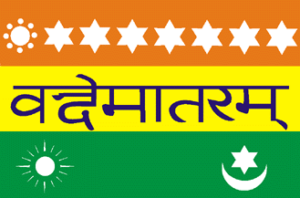
Around the same time as the previous flag was being hoisted, another flag was designed by Madam Bhikaji Cama, Veer Savarkar and Shyamji Krishna Varma. Largely based on the Calcutta flag, this flag was popularly known as the ‘Madam Bhikaji Cama flag’ and it was exhibited in the socialist conference in Berlin, Germany. Hence, it was also known as the Berlin Committee flag.
The flag too was tricolored and contained Saffron, Yellow and Green (from top to bottom). The Saffron strip had one lotus and seven stars to denote ‘Saptrishi’, the Yellow strip had Vande Mataram written in it just like the Calcutta flag and the Green strip had a sun on the left side and a crescent moon and a star on the other side.
The importance of this flag was that this was the first Indian Flag to be hoisted internationally.
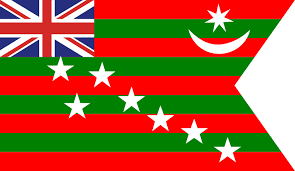
The third flag came at a very crucial point in the struggle for independence i.e., the Home Rule Movement. It was in 1917 that Annie Besant and Lokmanya Bal Gangadhar Tilak designed a flag during the movement itself. It was later hoisted by the Congress while its Calcutta session was on.
This flag had five Red strips and four Green ones. It retained the ‘saptrishi’ and there was a symbol of the Union Jack in the left top corner. The right top corner had a crescent moon and a star right above it.
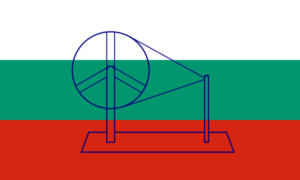
In 1921, while Gandhi Ji was on a visit to Vijaywada, a student named Pingali Venkayya presented a design for the Indian National flag to him. The design contained two colors i.e., Red and Green. Red was a representative of Hindus and Green for Muslims.
Mahatma Gandhi suggested the addition of white color as a representative of all the other religion. The addition of the Spinning Wheel was suggested by Lal Hans Raj to represent the idea of self-reliance which was propagated by Gandhiji.
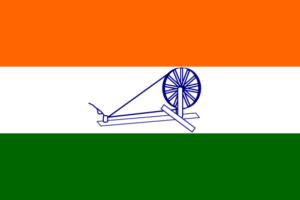
10 years later, 1931 was a landmark in the transformation of our national flag. Venkayya’s original design was majorly acceptable to most stakeholders but there were still some changes which needed to be made and it had to be made sure that the flag did not have any religious connotation.
Therefore, Red was substituted with Saffron and White and Green colors were retained and so was Gandhiji’s Charkha. The Saffron signified courage, White stood for truth and the Green color represented Fertility, Growth and Chivalry. Interestingly, it was also the battle crest of the Indian National Army and a resolution was passed by the Congress to make it the official flag of the country.
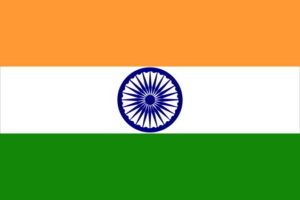
The present and final design of our tricolor was eventually adopted in 1947. While the color pallet and its meaning were retained, the Spinning Wheel was replaced with Ashoka’s Chakra which is also known as the “Eternal Wheel of Law”.
The Constituent Assembly, on 22nd July 1947 officially adopted it as the National flag of India which was the National Flag of the ‘Dominion of India’ till 1950 and then it became the National flag of independent India. Hence, the ‘Swaraj Flag’ of the congress party also became the national flag of independent India.
Flag Code of India
The Flag code of India is a set of rules and regulations which guides and regulates the protocols to be followed while using the National Flag of India. Before the Flag Code of India came into existence in 2002, the display of the Indian Flag was guided by the provisions of The Emblems and Names (Prevention of Improper Use) Act, 1950 and the Prevention of Insults to National Honour Act, 1971.
The creation of the Flag Code of India as an attempt towards consolidating all the laws, practices and conventions related to the usage and display of the Indian national flag. It came into existence on 26th January 2002 and it superseded the previous Flag Code of India.
The code has been divided into 3 parts. Part 1 contains the general descriptions of the National Flag while part 2 is talks about the display of the National Flag by the private and public organizations and part 3 is devoted to the display of the National Flag by the State and Central Government and their agencies.
General Description of the National Flag
Flag size Length and width in mm
1 6300×4200
2 3600×3400
3 2700×1800
4 1800×1200
5 1350×900
6 900×600
7 450×300
8 225×150
9 150×100
Given below are the important points about the descriptions of the Indian National Flag:
- The color of the top band of the flag shall be Indian saffron (Kesariya) and that of the bottom band shall be Indian green. The middle panel shall be white, bearing at the center the design of Ashoka Chakra in navy blue colour with 24 equally spaced spokes.
- Khadi cloth is the only material allowed to be used for the flag and anyone waving a flag made of other materials except khadi or hand spun cloth is punishable by law with imprisonment of up to three years, besides a fine. Raw materials that can be used for khadi are restricted to cotton, silk and wool.
The guidelines also state that there should be exactly 150 threads per square centimeter; four threads per stitch; and one square foot should weigh exactly 205 grams (7.2 oz).
- Flags made out of paper can be used by the public on important national occasions and sporting events but no flags should be thrown away or discarded on the ground, at the event or elsewhere. The disposing off of the flag should be done as a private affair and is supposed to be done in a respectful manner.
- The flags of size of 450×300 mm are intended for the aircrafts on VVIP flights, 225×150 mm size for cars and 150×100 mm size for the table flags.
Display of the National Flag
The rules to be follow while displaying the flag are as under:
- There is no restriction on private institutions, educational institutions or members of the general public from displaying the flag. They must only abide by the provisions of the Emblems and Names (Prevention of Improper Use) Act, 1950 and National Honour Act, 1971.
- The Flag should not intentionally touch the ground.
- It cannot be dipped to salute anyone or to honor a person.
- It cannot be used to drape anything and it cannot be used as a cover for statues, monuments etc.
- No other flag should be displayed or hoisted higher than the National Flag or even parallel to it. The other flag always has to be displayed at a height lower than the height of the National flag
- A dirty or torn flag cannot be used.
Half-Masting
According to Cambridge dictionary, “A flag that is at half-mast has been bought down to a point halfway down the pole as an expression of sadness at someone’s death.”
In India, a flag is flown at half-mast as a sign of state-mourning. When the flag is to be flown at half-mast, first it’s supposed to be raised to the top and then slowly brought half way down. The decision to call for state mourning lies with the President of India and he also decides the duration of such mourning.
Hoisting the National Flag: A Fundamental Right
On 23rd January 2004, Hon’ble Supreme Court declared that hoisting the tricolor is a fundamental right that cannot be taken away by the state from the citizens. This judgment was passed in the case of Union of India vs. Naveen Jindal and Anr.
The facts of the case were as follows:
Mr. Naveen Jindal, the petitioner, was the Joint Managing Director of a factory, whose office premises had regularly been waving the national flag of India. Government officials did not allow him to do the same, citing the Flag Code of India. Mr. Jindal filed a petition before the High Court and argued that no law could forbid Indian citizens from waving the national flag and, furthermore, the Flag Code of India was only a set of executive instructions from the Government of India and therefore not law.
The High Court allowed the petition and held that the Flag Code of India was not a valid restriction on the right to freedom of expression under Article 19 of the Indian Constitution. It was observed that, according to Article 19(2), the only valid limitations on this right were those that were contained in the statute. In cases concerning the regulation of the flying of the national flag, such limitations could be found in The Emblems and Names (Prevention of Improper Use) Act of 1950 or the Prevention of Insults to National Honour Act of 1971.
The Central Government was not satisfied and filed an appeal in the Supreme Court of India. The argument of the government was that whether or not citizens are free to fly the Tricolor was a policy matter which solely rested in the hands of the executive and that it could not be subjected to interference by the courts.
Dismissing the arguments given by the government, Chief Justice V N Khare stated that hoisting the national flag is a fundamental right of each citizen under Article 19(1)(a), provided that the premises at which the flag is hoisted is appropriate and does not undermine the dignity of the flag.
That was all we had to say about the iconic Indian National Flag!
At Deshpee, while we specialize in designing and marketing, we also have a special capability of building brands. You’ll always find us bringing in new services and getting into new avenues. We work for the people and with the people, and our ultimate goal is to contribute as much as possible for the well-being of the society. Stay connected with us and be a part of our boundless growth!
(Pictures of the flags taken from https://knowindia.gov.in/my-india-my-pride/indian-tricolor.php)

